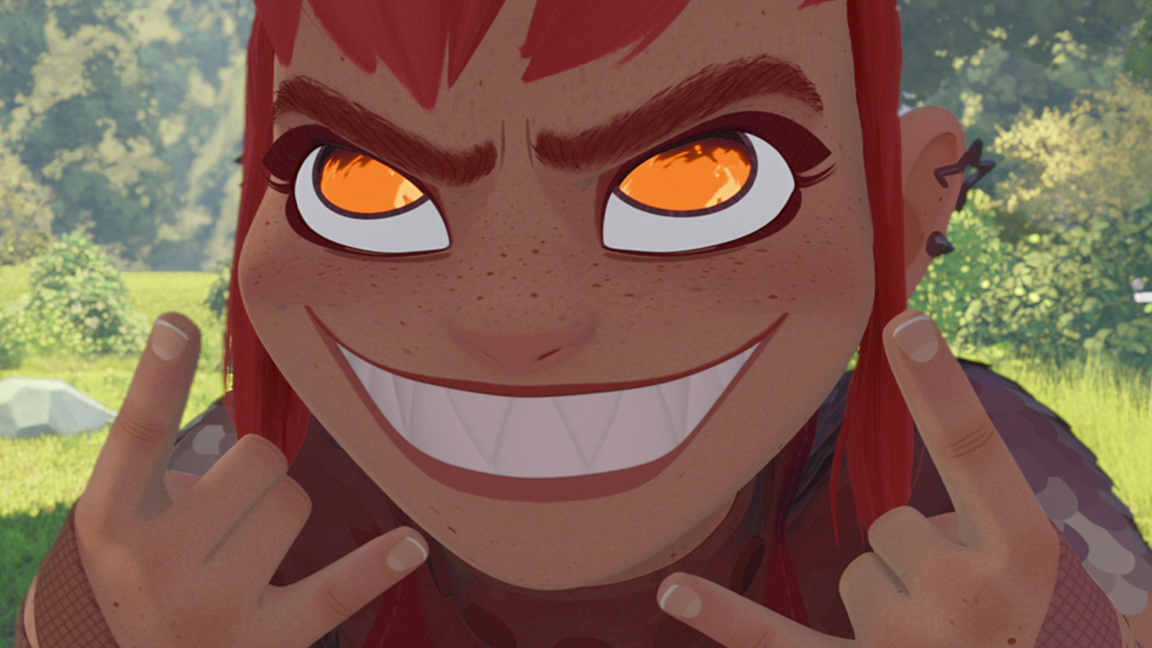
Nimona almost never happened. This beautiful Netflix animation was originally developed by Blue Sky Studios, the team behind The Peanuts movie, Ice Age and Horton Hears a Who!, before it closed dramatically in 2021. A world without Nimona would have been a sadder place.
One of those responsible for saving Nimona and bringing it to life is Theodore 'Ted' Ty, the global head of character animation at DNEG Animation, but also a 30 year animation veteran who has Mulan, Lion King and How to Train Your Dragon 2 on his impressive CV. Reflecting on his career history, it's no wonder Ty's focus for Nimona was on the core principles of animation - of crafting a story, focusing on key poses and bringing an old-fashioned 2D sensibility into 3D. It makes Nimona a special movie.
I meet Ty at SCAD AnimationFest 2023 where he's just finished his keynote talk. He covered how the film was saved by Netflix and DNEG Animation following Blue Sky Studios’ closure, and how the unique visual design of Nimona came about. Both aspects, I discover, have made an impact on Ty.
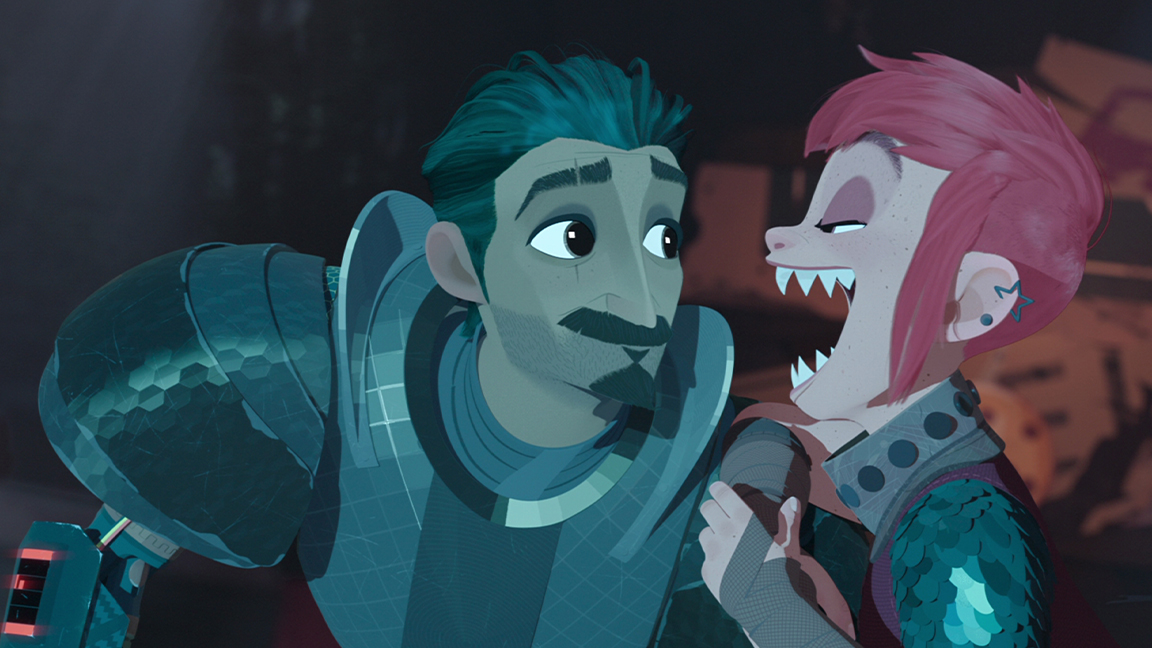
"When Nimona came along," reflects Ty, "I just hadn't felt like this about a movie in a long time". This is coming from an animator who worked in Lilo & Stitch, who has pushed the art of animation to new heights with each project he's worked on.
"I want to work on better films that are more diverse thematically and push animation to be more mature and sophisticated," he tells me, and Nimona is certainly that film.
Based on the Noelle Stevenson graphic novel of the same name Nimona is the story of the titular shapeshifter and the rogue knight Ballister Boldheart as they rebel against the Director, an authoritarian ruler of the film's fantasy kingdom. Focusing on issues of identity, Nimona reflects the zeitgeist of modern times and captures the imagination; it's a film that transcends the goal of simply making a 'cool film with a neat animated style'.
"Once in a while you're lucky enough to make a film that makes a difference," he says, contemplating the impact Nimona has had on audiences and the animation industry.
Get the Creative Bloq Newsletter
Daily design news, reviews, how-tos and more, as picked by the editors.
Ty comes across as a thoughtful and compassionate person. When Blue Sky Studios closed, he tells me "it was shocking […] my stomach just kind of dropped". Is there something about that connection to people - he can name each animator from every shot in Nimona - that makes Ty such a great animator? Probably.
Traditional animation theory and Nimona
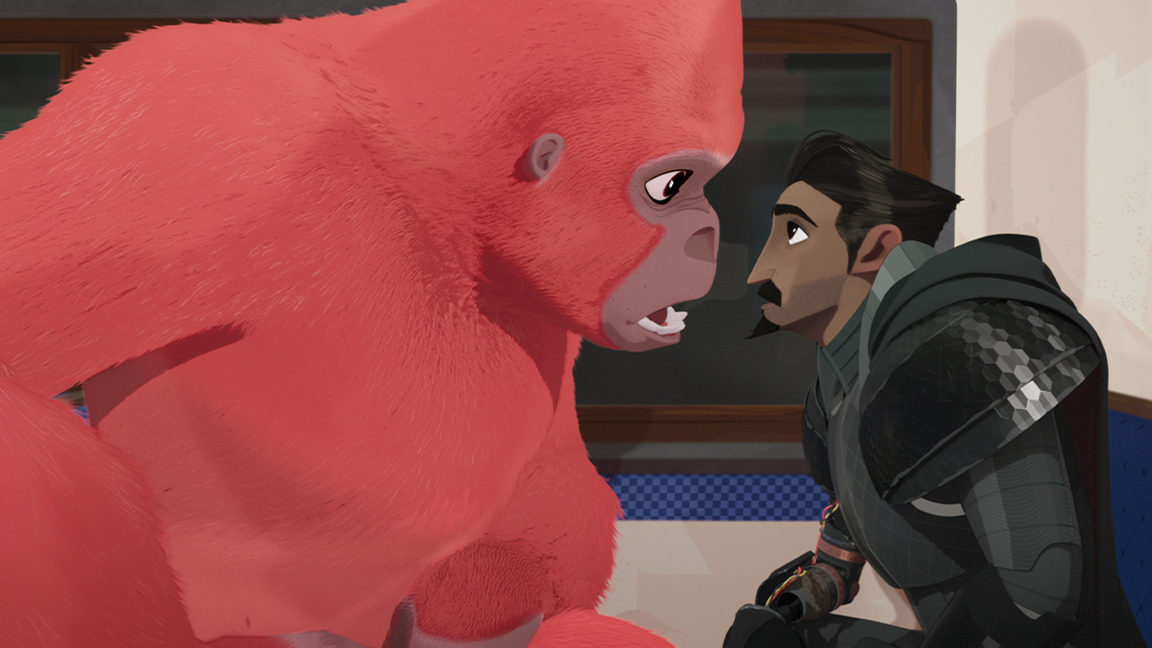
"I think great films do three things," Ty tells me. "They advance the art form, they advance cinema, in our case animation hopefully gets pushed where it hasn't been before, and those two things hopefully end up with the story having a societal impact for anyone who's never been accepted."
Ty explains how the goal for Nimona was to "make it as elegant as possible, and as advanced as possible, and moving things as little as I can," which means focusing on the core techniques of animation, re-schooling his team on the fundamentals of 2D while being brave enough to hold movement back. At times, characters in Nimona barely move, they're held still, to let the emotion of the moment sweep up the audience.
It's here that Ty says something surprising, "I don't ever want anyone, unless it's maybe a fellow animator, to mention the style". What does he mean? "I think people have an emotional attachment to Nimona, which is the biggest compliment to me that no one notices the animation."
I unpick what Ty is saying, and it boils down to a need to make an audience feel something, to be attracted to the emotion of a scene and to not become hung up on style over substance. Of course, Nimona is a beautiful animated movie that has stunning colour lighting and composition, incredible character design and subtle motion. But when no-one notices any of these things to simply be swept up in feeling a scene, well, as Ty says, "At this point in my career, that's the ultimate compliment".
The importance of storytelling
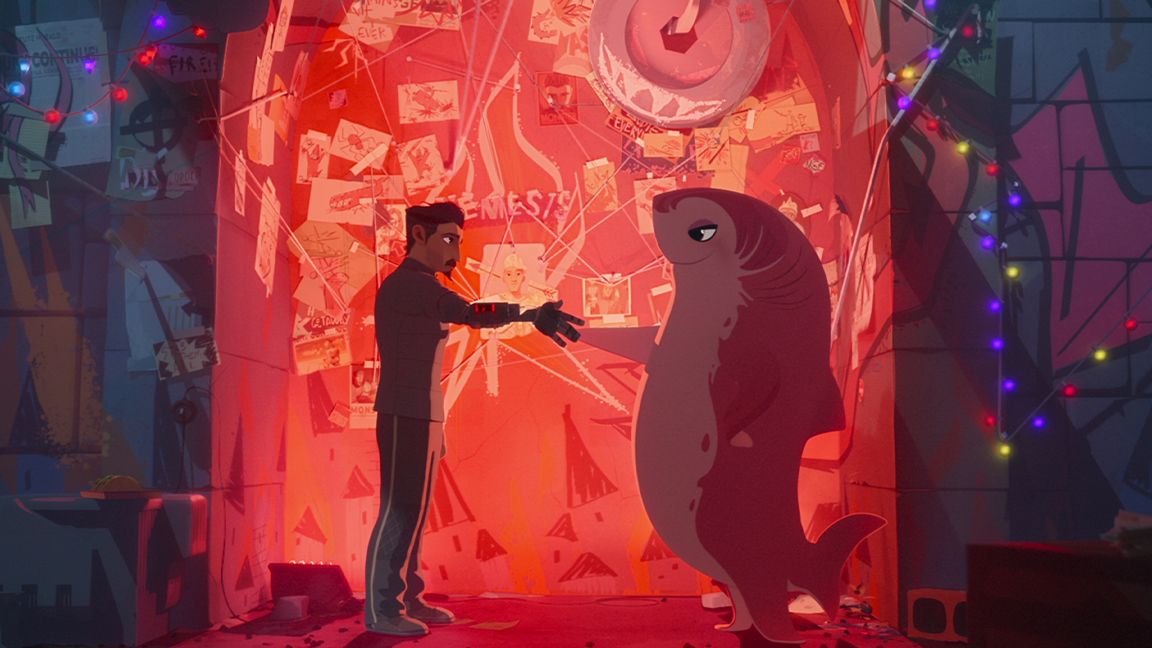
To achieve this Ty took the team back to basics. To the era of the 'nine old men' of animation - Les Clark, Marc Davis, Ollie Johnston, Milt Kahl, Ward Kimball, Eric Larson, John Lounsbery, Wolfgang Reitherman, and Frank Thomas. To a time without Google to rely on for research, to an era when artists needed to learn to look and study movement and emotion. Ty himself started as a 2D animator, and reflects, "we were really forced to explore and find things on our own, and study behaviour and go to draw it".
He looked back at the work of Chuck Jones and his incredible talent for finding the perfect pose, and rediscovered the techniques and principles of those 2D animators; to be mean and exacting with each line and pose to get to directly to a character's emotional state and their story.
It's about clarity, and it's about staging, it's about weight. It's just a means to an end of really strong storytelling.
Ted Ty, DNEG Animation
Ty says: "within the constraints of 2D, which they didn't ever get past, they perfected it, they reached the pinnacle. So why wouldn't you reach back into ancient archives to find out how to move forward? It's about clarity, and it's about staging, it's about weight. It's just a means to an end of really strong storytelling."
In many ways Nimona is a more traditional animation than its CG suggests, its heritage links directly back to the lineage of Chuck Jones and Walt Disney. In his SCAD Animation Fest talk Ty shared his approach to character poses and revealed how small shifts in how a back is arched, where feet are planted or how eye contact is guided can display a character's story.
What's fascinating is how Nimona's directness came partly from circumstance. The team at DNEG Animation had very little time to get up and running, and while the film was 75% complete, according to a report at CBR, Ty's team and directors Troy Quane and Nick Bruno, had no assets to work with aside from some core golden poses.
Learning to love restrictions
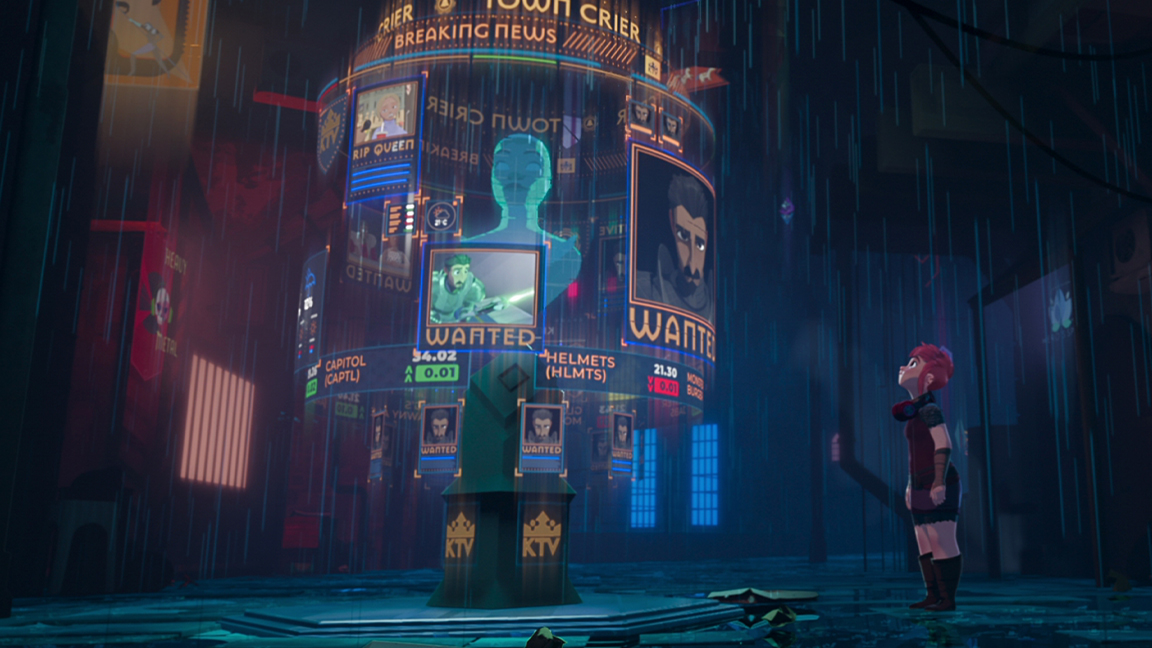
If you've not guessed by now, Nimona is the product of an art team savvy in animation theory revelling in the possibility to restrict themselves. There are moments in the movie when characters are left still, holding the moment to convey motivations, emotions or story and Ty tells me he was "dying to do that" for years.
Ty reveals how most of the animators on Nimona had "got out of their system" the need to create hyperactive characters and over-animate scenes. "A still character has an emotionally different feeling, depending on the context that led you there," says Ty. "That's what's so magical about a still pose, it's that you didn't have anything gesturally to guide the audience to help them along. They're just standing there. So hopefully, the audience had followed the story. So that still pose says ten times more."
A still character has an emotionally different feeling, depending on the context that led you there.
Ted Ty, DNEG Animation
As our interview comes to an end we fittingly come full circle, back to the practices of classic animation as Ty reveals the transformations of hero Nimona - she's a shape-shifting fantasy creature - took inspiration from and offered "a very distant tip of the hat", laughs Ty, to movies like Sword in the Stone.
What really drives the character's transformations, into a bird or a mouse or weasel or the gorilla is the emotional connection to the shift. Ty, I discover, is an animator so at home in the technical craft of animation that he's beyond the how and is more interested in the why. "When she's having a good time from one character […] they're quick, but when she's under threat from all the villagers with the torches and the pitchforks, it's very defensive," explains Ty.
It's fascinating to speak with an animator so experienced and at ease with his craft, but also eager to try new things and push what can be done. We're in the eye of a creative storm when it comes to animation, whether that's the splashy design of Spider-Man: Across the Spider-Verse or the restrained sophistication of Nimona.
If you're inspired by Ty and Nimona, and you're keen to get into animation, read our tutorial on how to draw animals with Disney legend Aaron Blaise and my guide to new app Procreate Dreams for how to get started yourself. You can also find details on SCAD's animation courses for professional training.

Thank you for reading 5 articles this month* Join now for unlimited access
Enjoy your first month for just £1 / $1 / €1
*Read 5 free articles per month without a subscription

Join now for unlimited access
Try first month for just £1 / $1 / €1

Ian Dean is Editor, Digital Arts & 3D at Creative Bloq, and the former editor of many leading magazines. These titles included ImagineFX, 3D World and video game titles Play and Official PlayStation Magazine. Ian launched Xbox magazine X360 and edited PlayStation World. For Creative Bloq, Ian combines his experiences to bring the latest news on digital art, VFX and video games and tech, and in his spare time he doodles in Procreate, ArtRage, and Rebelle while finding time to play Xbox and PS5.
